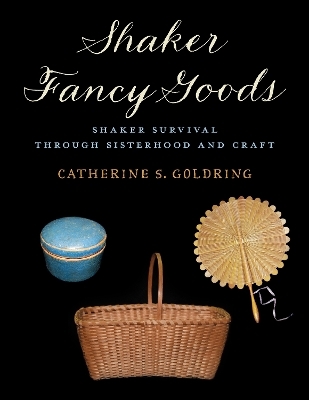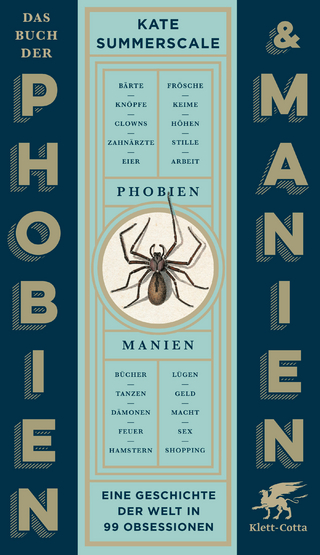
Shaker Fancy Goods
Gooseberry Patch (Verlag)
978-1-68475-023-8 (ISBN)
Shaker Fancy Goods tells the story of the Shaker Sisters of the nineteenth and early twentieth century who responded to the economic perils of the Industrial Revolution by inventing a lucrative industry of their own—Fancy Goods, a Victorian term for small adorned household objects made by women for women. Thanks to their work ethic, business savvy, and creativity, the tireless Shaker Sisters turned a seemingly modest trade into the economic engine that sustained their communal way of life, just as the men were abandoning the sect for worldly employment.
Relying on journals and church family records that give voice to the plainspoken accounts of the sisters themselves, the book traces the work they did to establish their principal revenue streams, from designing the products, to producing them by hand (and later by machine, when they could do so without compromising quality) to bringing their handcrafts to market.
Photographs, painstakingly gathered over years of research from museums and private collections, present the best examples of these fancy goods. Fancy goods include the most modest and domestic of items, like the pen wipes that the Sisters shaped into objects such as dolls, mittens, and flowers; or the emeries, pincushions, and needle books lovingly made back in an era when more than a minimal competency in sewing was expected in women; to more substantial purchases like the Dorothy cloaks that were in demand among fashionable women of the world; or the heavy rib-knitted sweaters, cardigans, and pullovers that became popular items among college boys and adventurous women.
Catherine Goldring first became interested in Shaker fancy goods when she owned an antique store in Littleton, Massachusetts. She lives in Natick, Massachusetts, and now works in real estate and teaches cultural studies at MassBay College in Wellesley, Massachusetts.
Contents
Pen Wipes
A practical invention, meant to keep a nib pen clean and functional, took many shapes (chickens, pigs, pond lilies, pansies, maple leaves, dolls) and sold briskly until the invention of the fountain pen.
Emeries, Pincushions, and Needle Books
During the heyday of needle making, as British factories were churning out more than 50 million needles a week, Shaker Sisters invented a profitable line of fancy accessories for sewing at home.
Cora Helena Sarle—Botanical Artist and Fancy Goods Painter
Sarle began composing botanical drawings as a 19 year old, a testament to the encouragement among the Shakers to follow your own talent and spirit. That turned into a lifetime painting scenes—on plates, buttons, tin boxes, and pincushions—for use in the Community and for sale.
Raccoon Fur and Silk Gloves
As revenues from the Shaker seed business waned, income from the coonskin fur and glove trade flourished, with Brothers and Sisters working side by side in a far-reaching enterprise that betrayed a surprising instinct for contemporary fashion among the Shakers.
Shaker Dolls
The Sisters created a thriving business in Shaker dolls for practical reasons: they wanted to make use of the fabric scraps left over from the Shaker cloak trade. Thanks to this thrifty impulse, generations of mothers and daughters cherished their own demure porcelain dolls, dressed in meticulous facsimiles of modest Shaker dress, complete with bonnets, cloaks, and lace collars and undergarments.
The Shaker Cloak
The Sisters made gray cloaks for decades for their own use, but in the late 1800s began to make versions in a stunning range of colors, with painstaking details, for fashionable women of the world, who called them opera cloaks. Separate villages ran their own concerns, each headed by an Eldress, or pair of Eldresses, who each ran her own brisk business year round.
Shaker Fans
From the 1820s through the early twentieth century, the Sisters made fans in a variety of fashionable styles and colors, using palm leaves, paper, poplar, feathers, and ribbons, with handles of maple, black ash, cherry wood, and other ingenious materials. These seasonal items were highly salable, made of local materials, and could be made quickly, year round, and so provided the Sisters with an outlet when other seasonal items were unavailable.
Poplarware Boxes
The Shakers began making small boxes, first with cardboard and wallpaper samples, sometimes with fragrant orange peels, and this practice developed into ingeniously woven poplar boxes. Each village developed its own signature styles, and the perennial best sellers were crafted in a dizzying array of shapes and forms. Despite the signature styles, the production of boxes was a cooperative venture, with raw material and equipment shared from one village to the next as need arose.
Shaker Fancy Baskets
Shaker baskets began as a utility, made by men, for practical chores. As the Villages lost men to industrial employment, the Sisters began making fancy woven basket versions of the utility baskets in a great range of styles—string baskets, button baskets, cat-head baskets, knife baskets—and individual weaving styles, like quadrifoil, hexagonal, sawtooth.
Fancy Brushes and Dusters
The Sisters made fancy brushes and dusters out of horsehair and velvet, with elegant handles lathed out of a variety of woods, such as maple, cherry, and walnut. In an era when men wore expensive beaver top hats that needed constant brushing, the trade proved to be a valuable one, and the goods were easy to make.
Shaker Sweaters
Like the Shaker cloak, the trade in Shaker sweaters had its origin in the practical wear that the Sisters knitted for themselves. With the advent of knitting by machine, the Sisters capitalized on the chance to produce high-quality sweaters of the best wool, at high volume.
Later Twentieth Century Shaker Fancy Goods
In an afterword by Michael Graham, the director of the Sabbathday Lake Shaker Museum gives a brief catalogue of contemporary Shaker crafts over the past fifty years.
| Erscheinungsdatum | 11.10.2021 |
|---|---|
| Verlagsort | Delaware |
| Sprache | englisch |
| Maße | 225 x 282 mm |
| Gewicht | 866 g |
| Themenwelt | Kunst / Musik / Theater ► Antiquitäten |
| Geschichte ► Teilgebiete der Geschichte ► Kulturgeschichte | |
| Geisteswissenschaften ► Religion / Theologie ► Christentum | |
| ISBN-10 | 1-68475-023-7 / 1684750237 |
| ISBN-13 | 978-1-68475-023-8 / 9781684750238 |
| Zustand | Neuware |
| Haben Sie eine Frage zum Produkt? |
aus dem Bereich


